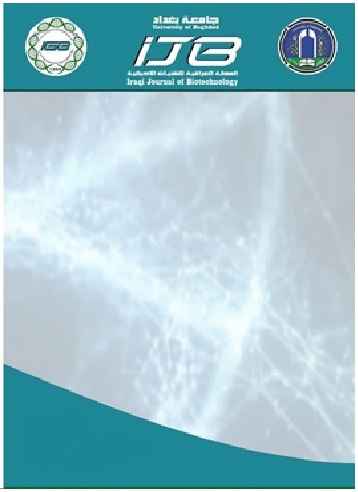Abstract
Hepatitis is an inflammation in the liver. The hepatitis can be self-limiting or can progress to
fibrosis, cirrhosis or liver cancer. Hepatitis viruses are the most common cause of hepatitis in the world
but other infections, toxic substances (e.g., alcohol, certain drugs), bacteria and autoimmune diseases can
also cause hepatitis. Liver function tests are useful in determining the severity and prognosis of some liver
illnesses, such as viral hepatitis. HBV infection can alter blood levels of various hepatic enzymes and
chemicals, such as ALT, AST, and a rise in these enzymes above normal. It is considered that their top
reference limits are unusual. Once there is a hepatitis infection, the enzymes AST and ALT are often
released into the circulation. ALT serum level elevation corresponds more with hepatic damage, hence
ALT serum level elevation correlates more with hepatic damage. The aim of the research is to know the
level of liver enzymes for different stages of the disease in patients in groups with the hepatitis virus
Patients with chronic hepatitis B virus group, Advance Chronic hepatitis B Patients with cirrhosis group,
Recovered patients with undetected virus group, and apparently healthy subjects group. Levels of serum
ALP and TSB were significantly higher among those with chronic hepatitis B compared with healthy
individuals. The total number of samples is two hundred (200). The study population consisted of 50
patients with chronic hepatitis B infection (HBsAg seropositive), and 50 apparently healthy (HBsAg
seronegative) participants as controls. Fifty patients with cirrhosis (HBsAg seropositive) and 50 patients
with undetected virus (HBsAg seronegative). Biochemical markers of liver disease were evaluated by
routine methods. Difference at AST, ALT, TSB and ALP levels, compared to healthy controls. The study
concluded that deranged AST, ALT, TSB and ALP values correlate with HBV infection and may be a
potential tool for disease diagnosis and progression.
fibrosis, cirrhosis or liver cancer. Hepatitis viruses are the most common cause of hepatitis in the world
but other infections, toxic substances (e.g., alcohol, certain drugs), bacteria and autoimmune diseases can
also cause hepatitis. Liver function tests are useful in determining the severity and prognosis of some liver
illnesses, such as viral hepatitis. HBV infection can alter blood levels of various hepatic enzymes and
chemicals, such as ALT, AST, and a rise in these enzymes above normal. It is considered that their top
reference limits are unusual. Once there is a hepatitis infection, the enzymes AST and ALT are often
released into the circulation. ALT serum level elevation corresponds more with hepatic damage, hence
ALT serum level elevation correlates more with hepatic damage. The aim of the research is to know the
level of liver enzymes for different stages of the disease in patients in groups with the hepatitis virus
Patients with chronic hepatitis B virus group, Advance Chronic hepatitis B Patients with cirrhosis group,
Recovered patients with undetected virus group, and apparently healthy subjects group. Levels of serum
ALP and TSB were significantly higher among those with chronic hepatitis B compared with healthy
individuals. The total number of samples is two hundred (200). The study population consisted of 50
patients with chronic hepatitis B infection (HBsAg seropositive), and 50 apparently healthy (HBsAg
seronegative) participants as controls. Fifty patients with cirrhosis (HBsAg seropositive) and 50 patients
with undetected virus (HBsAg seronegative). Biochemical markers of liver disease were evaluated by
routine methods. Difference at AST, ALT, TSB and ALP levels, compared to healthy controls. The study
concluded that deranged AST, ALT, TSB and ALP values correlate with HBV infection and may be a
potential tool for disease diagnosis and progression.
Keywords
alanine aminotransferase
alkaline phosphatase
Aspartate Aminotransferase
Hepatitis B surface antigen.
total serum bilirubin
